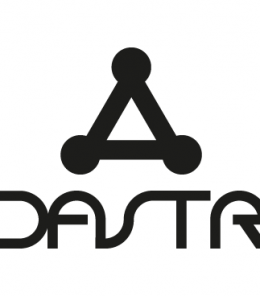What are Enterprise Applications?

Enterprise can use Gantt charts and other view opinions to visualize project tasks, goals, and progress at a glance. Enterprise project management tools are easily customizable, allowing you to cloud security companies view your projects from different angles. Additionally, businesses that require specialized services such as shop front install can benefit from integrating these tools into their operations. For example, when managing the installation or upgrade of shop front windows and doors, the right project management tools can help coordinate schedules, track progress, and ensure timely completion. Overall, choosing the right enterprise application for specific needs can streamline operations, improve performance, and achieve goals effectively. You can also click here for more information about paystubs to guide your business.
Connecting with other developer tools such as GitHub and Bitbucket and seeing which code is behind the ticket is also possible with Jira, among many other invaluable IT features. Capterra reviewer have given this solution an average rating of 4.4 stars while G2Crowd reviewers gave it a 4.2 stars rating. Closely connected with CRM, comprehensive customer service (CS) software will deliver a broad range of possibilities to effectively manage customer data and deliver the best possible customer experience. Enterprises need to include a proper CS solution to keep an eye on the ever-evolving customer expectations and demands.
Things to Consider Before Investing in Enterprise Application
Within any type of enterprise, several employees and processes are working simultaneously to perform various tasks. Some enterprises may orchestrate financial services while others handle sales, inventory, and accounts receivable. Regardless, many enterprises require different types of software to streamline various activities. An enterprise application (EA) is a business software system that orchestrates a specific operation. There are many different types of EA, each containing its own unique set of tools and functions to perform a task.
- After that, the insights are used to reveal patterns and make more precise forecasts using advanced statistical algorithms, bench-marking, and data mining.
- AWS is currently officially collaborating with SAP and Oracle so companies can run SAP and Oracle software on AWS.
- Moreover, Microsoft also provides comprehensive training services, technical support, and software deployment and configuration tools for its business clients.
- CMS systems, also known as Content Management Systems, are tools that allow you to control the content of websites.
- Certainly, it’s possible to upgrade an existing application to become an enterprise web application.
Questions should include how much data is needed, how the collected data will be split into test and training sets, and if a pre-trained ML model can be used. Sencha Ext JS also comes with several supporting tools, such as Sencha Cmd, Sencha Architect, Sencha Test, Sencha Stencils, Sencha Themer, and more. Companies use HR systems to store, process, and report employee information easily and efficiently. For example, HR systems monitor and provide insights on recruitment, staff scheduling, training, etc. The workflow was later inspected by a business analyst and they designed a solution for enhancing their publishing procedure.
What are the examples of enterprise systems?
In this case, it becomes even harder to coordinate among different systems that your branches and manufacturing units are using. Faster data exchange is very crucial to make agile decisions amidst the continuously changing markets and increasing customer demands. In simple terms, a specific piece of software that covers most if not all of the tasks inherent to an enterprise setting can be defined as an Enterprise Application Software. Get started with enterprise software on AWS by creating a free AWS account today. Another terrific option for building a content library, this collaboration and wiki tool enables team collaboration and knowledge sharing.

With technology, such as predictive analytics, integration, and API management, applications can avoid system disruptions. These technologies actively learn a business with each data input to improve productivity and provide consistent yields. This ensures that operations run smoothly regardless of employee interaction with the application. Enterprise software, also known as enterprise application software (EAS), is a type of computer software that helps manage various aspects of a business rather than individuals.
Characteristics of enterprise application software
Whatever request the user makes, they expect a speedy response within seconds. In order to achieve this, developers need to leverage various tools that minimize wait times. Business intelligence (BI) is the platform of integrated software that defines, combines, and aggregates large volumes of data. Enterprises typically use their BI to develop actionable insights, improve decision-making, and create predictive models. When companies use their BI correctly, they can identify their weaknesses, strengths, risks, and opportunities. The goal is to convert the group’s knowledge of the business problem and project objectives into a suitable problem definition for machine learning.

The technology not only helps us make sense of the data we create, but synergistically the abundance of data we create further strengthens ML’s data-driven learning capabilities. In software systems and technology preferences, it’s important for companies to choose the correct software depending on the requirements of the niche they are working in, such as user satisfaction and business success. Systemic change procedures are really hard for businesses, and users will resist changing their previous habits and the software they are familiar with. This employee resistance should be met calmly by understanding, and the advantages that they will be getting should be explained clearly to all the users of the software.
Why use enterprise application software?
Moreover, HR software systems can ensure compliance with labor laws and regulations, providing features such as leave entitlements, tax calculations, and legal document templates. By automating compliance tasks, HR professionals can focus on more strategic activities such as talent acquisition, employee engagement, and retention. EAM systems also offer functionality related to monitoring the performance and availability of individual assets and generating reports and analyses on their consumption, failure rate, or costs. This allows companies to make informed decisions on investing in new investments, choosing the best maintenance methods, or planning their replacement. QlikView – a data visualization and discovery tool that allows users to explore data and uncover insights. Among its features are data integration, data transformation, and data discovery.
Salesforce further proffers marketing management applications like marketing campaigns, social media advertising, and analytics. By bringing together and centralizing customer data, enterprises can deliver a personalized service experience that meets customer demands. Jira is one of our examples of enterprise applications that are fairly easy to use in terms of functionality and that’s why is very popular among the IT community. Teams can easily create custom boards depending on the needs but also different perspectives such as for developers, CTOs, tracking, etc.
Communication
Check the detailed information about the characteristics of enterprise level applications. In fact, we have written a detailed post on the 8 best examples of enterprise applications as well. JDA Software – a cloud-based SCM platform that provides a range of tools for supply chain planning, execution, and collaboration, as well as machine learning and AI capabilities. Oracle CX Cloud – a cloud-based CRM platform that provides a range of tools for sales, service, marketing, and commerce, as well as analytics and artificial intelligence capabilities. These applications are used to manage customer interactions and relationships, track sales leads and opportunities. They also help analyze customer data to inform marketing and sales strategies.

A business process is a sequence of tasks performed by the workers to attain the goals of the company. Such as, marketing staff uses the data from the sales about the most frequent needs of the clients, and the sales specialists can get advantages from this database of the marketer. In the case of a regular software application like a photo editing app, it does not require extensive integration. Whereas software application, such as Microsoft Word, is used for individual document creation and editing. One enterprise web application example is an Enterprise Resource Planning (ERP) system. In this blog, we will guide you through the basics, differences from regular software apps, and the process of creating them.
What Are The Characteristics Of Enterprise Applications?
Sage is one of the leading providers in the industry with a Capterra rating of 4.1 stars and 4.3 on G2Crowd. Datapine is an enterprise software company focused on delivering business intelligence solutions to industries and companies across the world. Embedding their solution into your own is fairly easy so you can use datapine as your own product and scale their features as your business scenarios require. With an impressive 4.8-star rating on Capterra and 4.6 in G2Crowd, the company has risen into a solution worth testing and utilizing in your enterprise operations. At Klipfolio, we create business dashboard applications that run in the cloud, making us the perfect solution for enterprises, SMBs, and SaaS companies alike. When you use our services, you can continuously monitor the performance of your business.
The efficient client portal app from National Trench Safety helps users keep track of rented equipment. Vision-based models also present new challenges, ranging from hallucinations about people to relying on the model’s interpretation of images in high-stakes domains. Prior to broader deployment, we tested the model with red teamers for risk in domains such as extremism and scientific proficiency, and a diverse set of alpha testers. Determine what data is necessary to build the model and whether it’s in shape for model ingestion.
It helps organizations streamline service delivery, automate workflows, and improve IT service quality. Low-code or no-code platforms like Appian and Mendix empower organizations to build custom applications tailored to their unique processes without extensive coding expertise. ERP apps connect numerous organizational divisions and tasks, such as finance, HR, inventory management, and supply chain operations.











